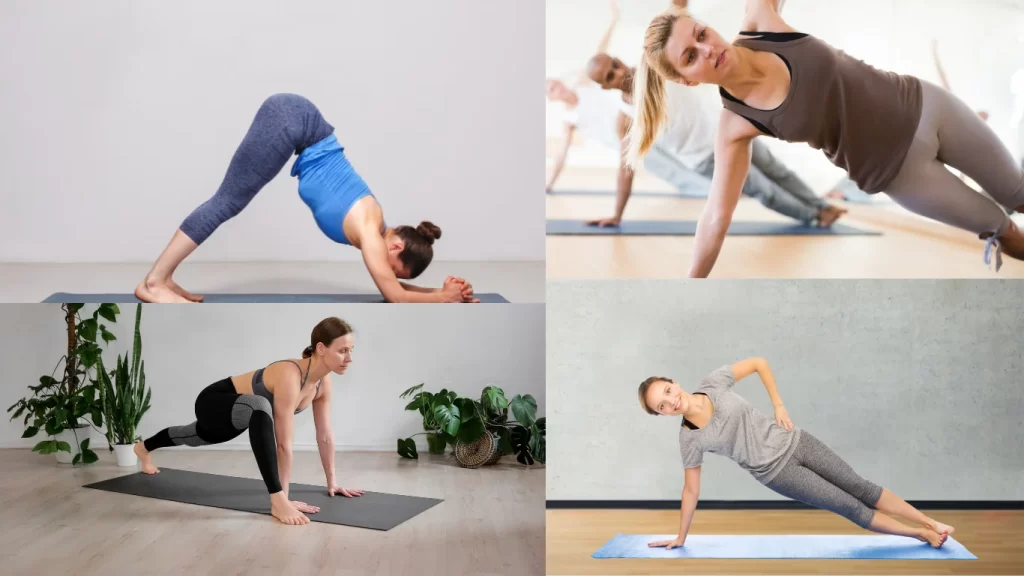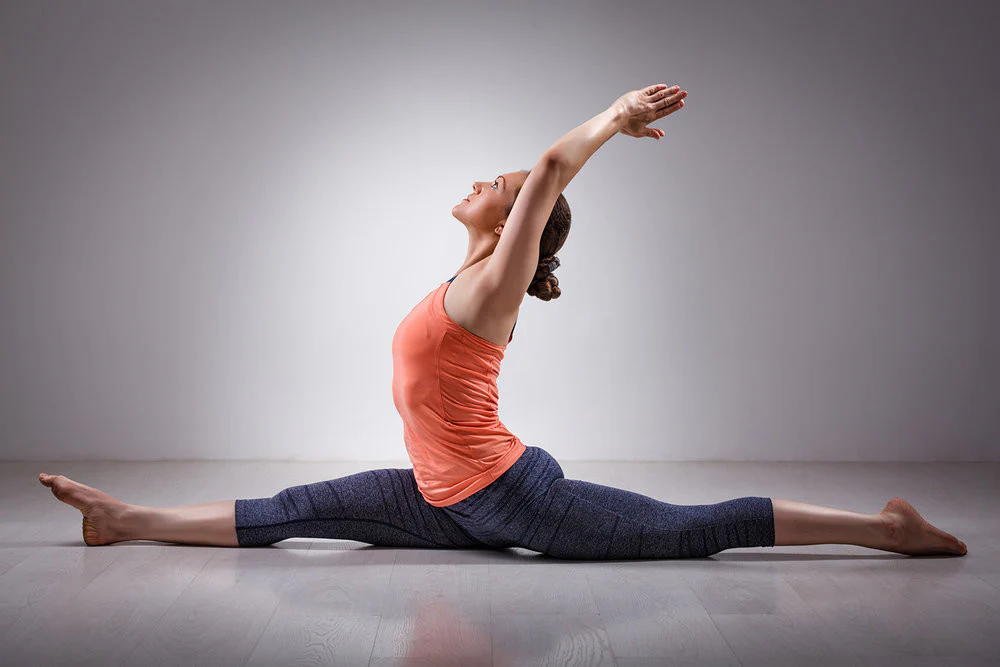In an era where stress has become a ubiquitous challenge, seeking methods for effective stress management and self care is more crucial than ever. Among numerous approaches, yoga for stress relief is a holistic solution for its immediate soothing effects and long-term benefits on overall well-being. This ancient practice, deeply rooted in the pursuit of mind-body wellness, offers a comprehensive path to health that counters the effects of stress through physical postures, breathing techniques, and meditation. The importance of integrating yoga into one’s lifestyle can scarcely be overstressed, particularly in contemporary society, where the pace of life continues to accelerate.
This article discusses the yoga benefits for health, mentally and physically. We will focus on the specific mental benefits of yoga, including its capacity to alleviate stress and enhance emotional equilibrium. The physical benefits of yoga will also be examined, showcasing its role in improving strength, flexibility, and overall physical health. By combining these mental and physical aspects, the article aims to present a compelling case for yoga as an indispensable tool for stress relief and improved health, thereby underscoring the yoga benefits of health in a wide-ranging and impactful manner.
Overview of Yoga and Its Holistic Approach
History and Origins of Yoga
Yoga is an ancient practice with roots deeply embedded in India’s cultural heritage, tracing over 5,000 years. The development of yoga continued through the ages, with pivotal contributions from various sages. The classical period marked by sage Patanjali’s Yoga Sutras, around 500 BCE to 400 CE, systematized and codified existing yogic practices into an eightfold path of yoga, emphasizing the union of body and mind as a means to spiritual enlightenment.
Types of Yoga Practices
Numerous styles of yoga have evolved, each with unique characteristics and benefits, catering to different preferences and needs.

- Hatha Yoga: Known for its gentle approach, this yoga method focuses on physical postures (asanas) and breath control (pranayama), preparing the body for more profound spiritual practices like meditation.
- Vinyasa Yoga: Characterized by a flow-like sequence of movements synchronized with breath, this style is dynamic and physically engaging, promoting strength and flexibility.
- Ashtanga Yoga: Developed in the early 20th century by Sri K. Pattabhi Jois, this rigorous style follows a fixed sequence of postures and is known for its physically demanding nature.
- Iyengar Yoga: This form emphasizes precise alignment of the body along with the use of props to achieve the correct posture, making it suitable for various age groups and levels of physical ability.
- Kundalini Yoga: Focused on awakening the energy at the base of the spine, Kundalini incorporates repeated movements, dynamic breathing techniques, and meditation, aiming to enhance spiritual and physical wellness.
- Restorative Yoga: This style uses props to support the body and allows deep relaxation as poses are held for extended periods, facilitating healing and recovery.
These diverse practices underscore yoga’s holistic approach, integrating physical health with mental and spiritual well-being. Thus, yoga is a comprehensive discipline that adapts to individual needs and lifestyles.
Mental Benefits of Yoga – Yoga for Stress Relief

Yoga is highly effective in promoting relaxation, which naturally counters stress and mind-body wellness. There are various poses for relaxation and stress relief. Regular practice shifts the balance away from the sympathetic nervous system controlling the fight-or-flight response, and into the parasympathetic nervous system, which promotes peace and tranquillity. This change is crucial as it lowers heart rate, reduces blood pressure, and decreases cortisol levels, significantly alleviating stress and anxiety. Moreover, there are specific yoga poses for stress relief like yoga nidra which can reduce stress levels and improve overall well-being and sleep quality, sustaining these benefits over time.
Enhancement of Mood and Emotional Health
Yoga not only reduces negative emotions such as depression, anxiety, and irritability but also enhances positive emotional states. Through consistent practice, individuals may experience increased serotonin levels, pivotal in mood regulation. Yoga also increases the production of gamma-aminobutyric acid (GABA), a chemical in the brain associated with improved moods and less anxiety. Additionally, meditation, a key component of yoga, reduces activity in the limbic system—the emotional part of the brain—leading to a more tempered response to stress.
Improvement in Focus and Mental Clarity
The mental benefits of yoga extend to enhanced cognitive functions. Regular practitioners often report improved attention, concentration, and memory. This is supported by studies showing that yoga strengthens brain areas linked to these functions, such as the cerebral cortex and hippocampus. Notably, these areas are known to decline with age, but yoga practitioners show less shrinkage, suggesting that yoga may help counteract age-related cognitive decline. Furthermore, focusing on the breath helps to centre the mind, enhancing mental clarity and the ability to remain present and focused in everyday life.
Physical Benefits of Yoga
Increase in Flexibility and Strength
Yoga is renowned for enhancing flexibility and muscle strength, which is crucial for overall body health. Regular practice leads to a gradual loosening of the muscles and connective tissues, which not only reduces aches and pains but also helps prevent conditions like arthritis and osteoporosis. The various yoga poses, or asanas, take joints through their full range of motion, helping maintain and improve flexibility and muscle strength. This is beneficial in protecting against conditions such as back pain and enhances proprioception, the awareness of the position of one’s body, which improves balance and overall physical coordination.
Better Cardiovascular Health
The practice of yoga contributes significantly to cardiovascular health. It is known to lower blood pressure, cholesterol levels, and heart rate, critical factors in preventing and managing cardiovascular diseases. Yoga practices, especially slow-paced ones, have been shown to help the with atrial fibrillation in patients and improve heart function in middle-aged and older adults. Additionally, yoga helps in reducing arterial stiffness, thus enhancing heart function and potentially lowering the risks of heart-related issues. Regular yoga practice also supports the management of metabolic syndrome and other chronic conditions by improving blood measurements and reducing waist circumference.
Pain Relief and Injury Prevention
Yoga’s role in pain management and injury prevention is profound. It increases blood flow, hemoglobin levels, and red blood cells, allowing more oxygen to reach body cells, enhancing their function and aiding in pain relief. The practice is particularly beneficial in reducing pain and disability associated with chronic conditions such as arthritis, Carpel Tunnel syndrome, and back pain. Moreover, yoga’s emphasis on correct posture and muscle strength helps prevent injury. Regular practitioners experience less muscle tension and an overall decrease in body-wide inflammation, contributing to healthier hearts and reduced stress levels. This holistic approach addresses physical ailments and enhances, mind-body wellness, and mental well-being, thus supporting a comprehensive healing process.
Combining Mental and Physical Benefits

Yoga provides an opportunity to strengthen the mind-body connection, emphasizing the importance of both physical and mental health. By engaging in yoga, individuals work through the body to deepen their relationship with themselves, managing stress and maintaining good mental health. This connection is about physical health and requires an internally targeted focus on self-awareness, breath, and energy. Yoga promotes relaxation by slowing the breath and focusing on the present moment, resulting in a sense of serenity and rejuvenation. This holistic approach to wellness integrates an individual’s physical, mental, and spiritual components, improving aspects of health, particularly stress-related illnesses.
Yoga’s philosophy, as described by Patanjali in the Yoga Sutras, encompasses more than just physical postures; it includes conscious breathing, meditation, lifestyle and diet changes, among other practices. These components work together to achieve tranquillity of the mind and a sense of well-being. The practice of pratyahara, or turning the senses inward, allows for downtime for the nervous system, often resulting in improved sleep.
Conclusion – Yoga For Stress Relief
Exploring yoga benefits for health reveals its undeniable efficacy in enhancing mental and physical health, offering a holistic way to destress. Practicing the best yoga can be at the comfort of your home with a Jade Harmony yoga mat, Lululemon yoga mat or the various other options out there. By integrating the best yoga practices, including physical postures, breath control, and meditation, individuals can achieve a harmonious balance between mind and body, reducing stress and anxiety, improving mood and emotional health, and enhancing physical capabilities and pain management. The ancient wisdom of yoga, coupled with contemporary scientific evidence, underscores its value as a form of physical exercise and a comprehensive lifestyle practice capable of improving quality of life.
In light of yoga’s profound impact, it becomes clear that incorporating this time-honoured practice into one’s daily routine represents a proactive step towards fostering better health and wellness. The significant implications of yoga poses for stress relief are far beyond individual improvement or mind-body wellness. Rather, it potentially influences the broader society by promoting healthier lifestyles and mitigating the pressures of modern living. As research continues to unveil the depth of yoga’s positive effects, it encourages a closer look at how this ancient practice can serve as a critical component in pursuing holistic health and stress relief, compelling us to integrate some of the best yoga practices into our lives for lasting well-being.





